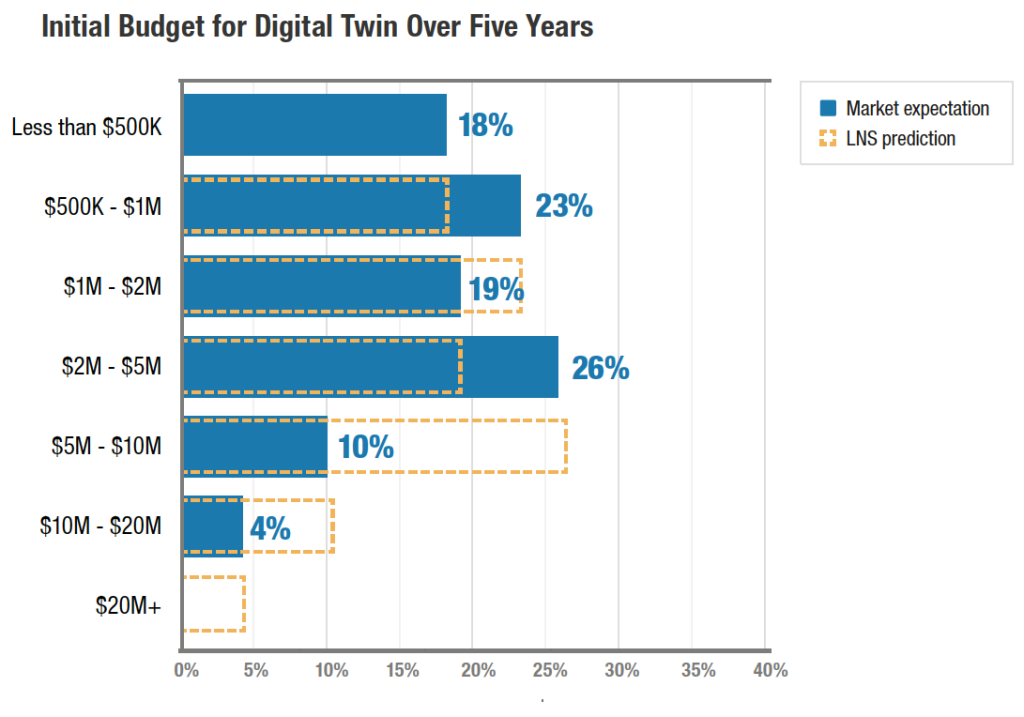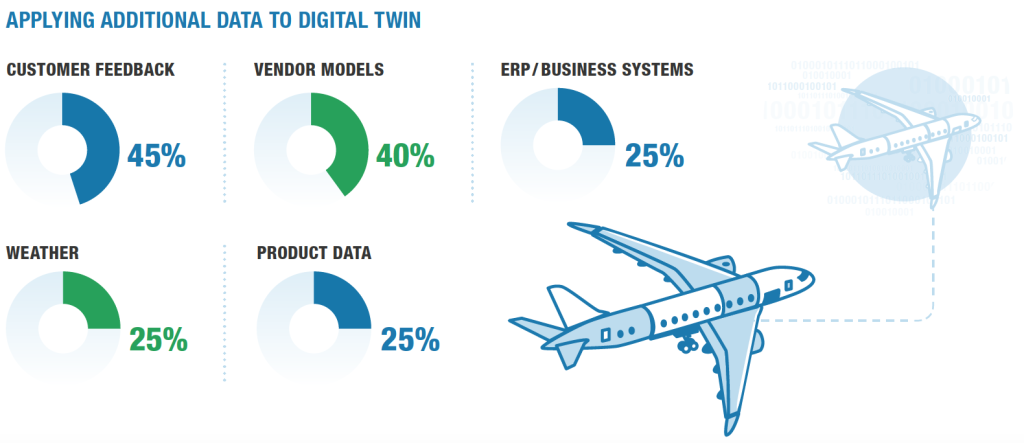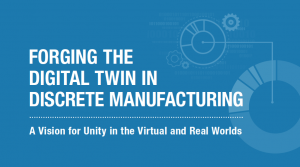This is Part 4 of our 12-part blog series based on the LNS Research eBook,“Forging the Digital Twin in Discrete Manufacturing: A Vision for Unity In the Virtual and Real Worlds”.
Previously in Part 3 we discovered who is using Digital Twin technologies in which industries, according to LNS Research. Now let’s look at growth expectations for Digital Twins in manufacturing.
Growth Expectations
Over the next five years, we can expect to see an increase of about 22% in million-dollar Digital Twin projects. It’s important that corporate strategic planning takes into account today the likely spend on Digital Twin. LNS Research predicts that investments will happen faster than the numbers show today.
When it comes to ROI expectations and payback timeline, nearly 60% of companies expect to recoup their investment within one year. That seems quite ambitious for first Digital Twin projects; a full design and data analytics integration for just a high-level digital twin will be hard-pressed to pay back full investment in a year.
Instead, companies with a long-term view and integrate the digital twin projects into industrial transformation programs will achieve the greatest success.
Over a more extended period of five years, things should be different; 75% of companies expect 10-100% ROI. Only 13% of companies forecast that they’ll at least double the Digital Twin investment in five years. As companies evaluate Digital Twin opportunities, we hope that a much higher proportion can achieve dramatic ROI; the sky is the limit for the ambitious organization.

Companies Have Big Expectations
The possibilities to improve the manufacturing organization with digital twins are impressive. The survey listed a variety of possibilities across several broad categories, and respondents selected as many as they use or intend to use:
- Technologies that deliver data
- Use cases
- Manufacturing business processes
Technologies that deliver data are innumerable. The potential for ROI in a Digital Twin increases as the company applies more data sources to improve twin fidelity and completeness. The first and most obvious to a manufacturer are data historians and Manufacturing Execution System (MES) software /MOM, followed by distributed control systems such as PLC, HMI, and SCADA, and quality systems. We expect almost all manufacturing companies will use some or all of these in a Digital Twin program.
The next level of data is more interesting. For example 45% of companies said they would use customer feedback, 40% vendor models, and over 25% each from ERP/business systems, weather and product data. Companies focused on Digital Twin are clearly thinking laterally to expanding coverage outside a typical plant-centric focus.
While Digital Twin use cases form a substantial list, the top among discrete manufacturers with 25% or more each are:
- Improved product quality
- Reduce manufacturing costs
- Reduce unplanned downtime
- Increase throughput

EXALEAD Commentary
IoT technology is creating new opportunities for business transformation. For example, by enabling OEMs to monitor remotely their installed base of assets without requiring an IT access to the sensors embedded in their assets, OEMs will be able to progressively sell their Assets-as-a-Service. Owner/Operators will have the opportunity to concentrate on production and will contract services engagements with OEMs and TIC for maintenance and certifications duties.
On the 3DEXPERIENCE platform, EXALEAD is enabling this paradigm shift by delivering powerful decision-making analytics that allow OEMs to reveal their Quality of Services KPIs with each of their customers by monitoring their entire fleet of assets.
Previously siloed across separate systems and locations, data aggregated together in one platform provides manufacturers with real-time visibility into assets. All data is analyzed within the larger context, enabling leaders to monitor projects globally and locally. Enterprises can use the Digital Twin to ask unlimited “What-if” questions, accurately projecting real-life performance and outcomes under diverse experimental conditions.
In the next blog installment, we will investigate Digital Twin use cases in manufacturing.
Part 1: What is a 3DEXPERIENCE Twin?
Part 2: Digital Twins and Manufacturing: Today’s Possibilities
Part 3: Who is using Digital Twin Technology?
Part 4: Growth Expectations for Digital Twins in Manufacturing
Part 5: Digital Twin Use Cases in Manufacturing
Part 6: Exploring Digital Twin Opportunities in Manufacturing
Part 7: Simulating Product Use with Digital Twins in Manufacturing
Part 8: Simulating the Manufacturing Process with Digital Twins
Part 9: Software in Digital Twin
Part 10: Real data versus virtual data
Part 11: Digital Twin: Pragmatic Considerations
Part 12: Recommendations for Getting Started with Digital Twin

Read our White Paper on Forging the Digital Twin in Discrete Manufacturing
Join our User Communities to stay on top of the latest industry news, ask questions and collaborate with peers:
- EXALEAD Sourcing & Standardization Intelligence User Community
- 3DEXPERIENCE Marketplace | PartSupply User Community
- NETVIBES Public Community

Learn more about EXALEAD on the 3DEXPERIENCE platform.
